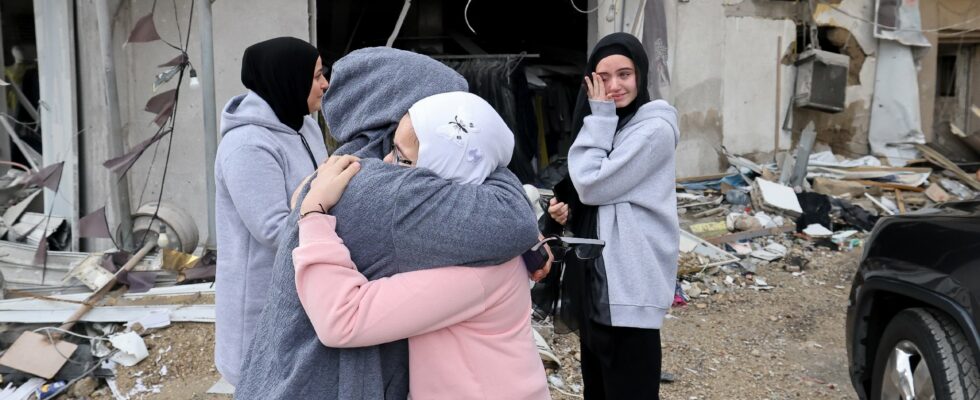The images coming from Lebanon are reminiscent of the end of the 2006 war: thousands of civilians are rejoicing at their return to their villages, their homes, after spending months in schools, homes, or even in the streets. From Syria, northern Lebanon or Beirut, cars heading south caused huge traffic jams. Since the official announcement of the truce on November 27, the Lebanese have expressed their relief and celebrated the return of stability for the first time since October 8, 2023, when Hezbollah took the decision to launch missiles towards Israel to support the Hamas. The difference between today and the end of the war in 2006? At the time, refugees held up photos of Nasrallah, leader of Hezbollah, considered a victorious hero. Today, Nasrallah is dead and the presence of the Shiite militia seems almost erased. Could this be the start of true peace?
Like Resolution 1701 which ended the 2006 war, this new agreement puts before the ceasefire, the restoration of stability in southern Lebanon, and the presence of the Lebanese army throughout the territory, while affirming that weapons must remain exclusively in the hands of this official force. The only added article stipulates that both sides retain the right to defend themselves in the event of a violation of the truce by Israel or Lebanon. The IDF is allowed to stay in some southern villages for 60 days. A situation which could lead to clashes with remaining elements of Hezbollah, despite the presence of the Lebanese army and the United Nations Interim Force in Lebanon (UNIFIL). What happened the day after the truce: a Hezbollah vehicle entered land where the IDF was still deployed. The Israeli army reacted immediately. But if this agreement is to have a lasting future, it will depend on two things: the power of the Lebanese army and the weakness of Hezbollah.
Syria abandons Hezbollah
Well before October 7, 2023, the Lebanese army suffered from a lack of funding and modern weapons. With around 126,000 soldiers, it did not have the necessary equipment to protect the country. It has always been dependent on foreign aid, notably from the United States, Europe and Saudi Arabia. In 2013, the latter allocated three billion dollars in aid to counter Iranian domination of Lebanon via Hezbollah. Since the 2006 war, the Shiite militia had strengthened, with around 150,000 missiles, some of which were of high quality, and 45,000 fighters adhering to an Islamist ideology inspired by Ayatollah Khomeini. Without the agreement of the Lebanese population, Hezbollah played an essential role alongside Iranian soldiers in saving the Syrian regime of Bashar al-Assad. He became the main actor in Lebanese political life. His forces managed to take control of the police and secret services, while locking down the press. This prompted Sunni Arab countries in conflict with Iran, such as Saudi Arabia and the United Arab Emirates, to cut off all aid to the Lebanese population.
But since September, the elimination of most of Hezbollah’s leaders, as well as the destruction of numerous military bases, has changed the situation. The IDF strikes in Syria against Hezbollah officials pushed the Syrian regime to abandon this Iranian proxy. Even the militia cadres who had taken refuge in Syria no longer had support from the regime. Assad has not made any statement regarding Nasrallah’s death.
The Shiites, the first victims of the war
On October 24, during the visit of Najib Mikati, the Prime Minister of the Lebanese technocratic government to Paris, the Elysée announced a grant of 100 million euros for Lebanon. French military equipment was sent to reinforce the Lebanese army. As soon as the truce was announced, the army moved south to protect the borders and replace Hezbollah. These signs demonstrate real change in the country. Especially since the Arab summit in Riyadh on October 12 expressed its unconditional solidarity with the Lebanese army. Saudi Arabia can play an essential role in the reconstruction of Lebanon devastated by this conflict. The Saudis have maintained historic ties with Lebanon since the Taif agreement, signed in 1989 in this Saudi city, which ended the civil war, followed by financial aid and investments to rebuild the center of Beirut in the 1990s.
Will this truce mark new stability for Lebanon? An opportunity presents itself to this country to preserve its sovereignty, turn the page on war and normalize its relations with Israel: the only solution for lasting peace. For this, it is essential to elect a new president and sever ties with Iran. This seems possible, especially since the loss of confidence in Hezbollah is felt among many Lebanese, including within the Shiite community. The latter are the first victims of this war. “This conflict is essentially between Palestinians and Israelis. Why should the Lebanese pay the price?” said one woman on social media. This phrase circulates widely among Lebanese communities involved in a war that does not concern them.
* Writer and poet born in Damascus, Omar Youssef Souleimane participated in demonstrations against the regime of Bashar el-Assad, but, hunted by the secret services, had to flee Syria in 2012. Refugee in France, he published with Flammarion The Little Terrorist, The Last Syrian, A room in exile, and recently Being French.
.
